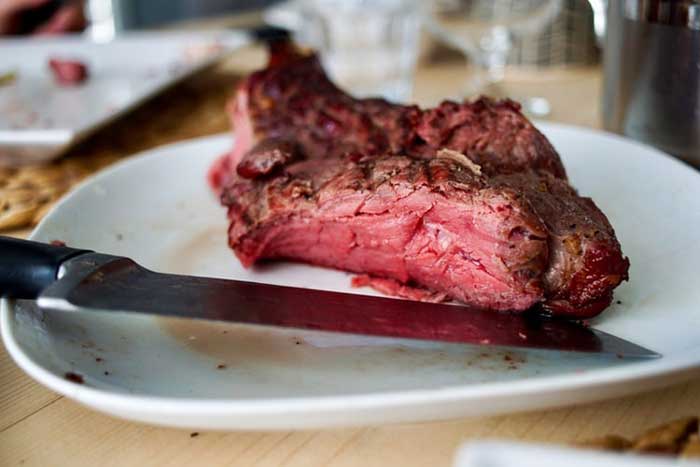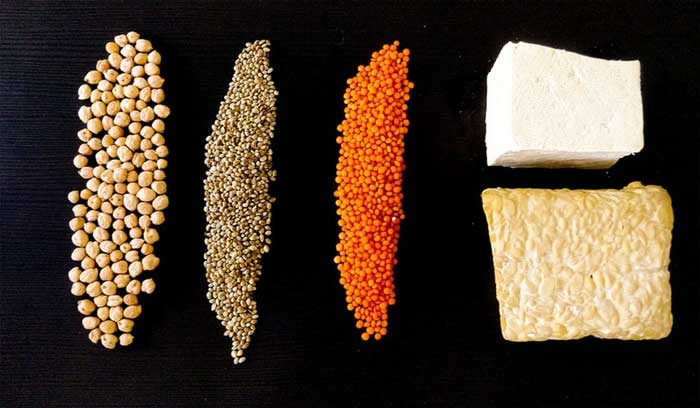Meat is primarily a source of protein, which is known to be the building material for our body. But sometimes you just want to take a break from it or change the diet to the one with fewer calories. And then the question arises, how to replace fatty meat? The editors of Geniusbeauty.com decided to find the answer.
 A diet with a certain calorie restriction, for example, if you want to lose weight, is inevitably associated with correcting your nutrition and excluding fatty meat from it. However, such changes can be fraught with a significant increase in the calorie content of your menu, which means you will get the opposite effect. But is there an alternative to meat that will help lose weight rather than gain fat mass?
A diet with a certain calorie restriction, for example, if you want to lose weight, is inevitably associated with correcting your nutrition and excluding fatty meat from it. However, such changes can be fraught with a significant increase in the calorie content of your menu, which means you will get the opposite effect. But is there an alternative to meat that will help lose weight rather than gain fat mass?
Traditional fatty meats include: pork, lamb, beef, and duck. Of course, you can eat these products, but if you keep to a diet, it is better to exclude them or limit the portions to avoid a significant increase in the calorie content.
Lean meat
Meat with less fat can be a good alternative to high-calorie meat. For example, rabbit, turkey or chicken breast. It should be remembered that chicken wings and thighs are richer in calories and contain much more fat than white meat.
Fish

In addition to meat, fish can also be an alternative. Low-fat fish include cod, sea bass, hake, sea bass, and dorado. You can also include the fish rich in omega-3 polyunsaturated acids in your diet, but instead of salmon or trout, you should focus on less fatty sockeye salmon or coho salmon.
Egg whites
Chicken egg protein can be a good alternative to fatty meat as a source of protein. Moreover, egg whites are an easily digestible product that is perfect for snacking after weight training.
Except animal products, foods of plant origin can be the source of protein. However, it must be remembered that protein from plant products is absorbed worse than protein from fish meat and especially eggs.
Legumes

This is one of the most important sources of vegetable protein, which for some reason is undeservedly ignored in many countries. Meanwhile, lentils, legumes, and peas are very healthy and tasty. In addition, they are very affordable.
Soybean
Soybeans are #1 product in the diet of vegetarians, but those who love meat can certainly eat them. This is real protein with the same amino acids that a steak has. It is nutritious and rich in minerals, vitamins, and fiber.
Cottage cheese and low-fat cheese

5% cottage cheese and low-calorie cheese are also a great alternative to fatty meats. These products contain protein – casein, which contains both interchangeable and essential amino acids and is the building material for the body.
Dairy products
Dairy products, as well as kefir or yogurt can boast a sufficient amount of protein, but the content of lactose (milk sugar) in them is much higher than in cottage cheese or cheese. Another advantage of this group of products is a large amount of calcium in the composition.
Theoretically, proteins from sports nutrition can be perceived as an alternative to fatty meat, but they are just a food supplement and cannot replace it! Dry whey, added to a morning shake, can help restore muscles after a workout, but it can in no way completely replace the high-quality protein found in meat, so you should never use sports nutrition as the main source of protein.

Summing up, it should be noted that an excess of fatty meat, of course, increases the calorie content of the diet and can lead to weight gain, but still it is completely impossible to exclude fatty meat, since fats are the same essential component of nutrition as protein. Therefore, the best solution would be a variety of protein products on the menu, including both fatty and nonfat meat, as well as fish and vegetable protein sources.










